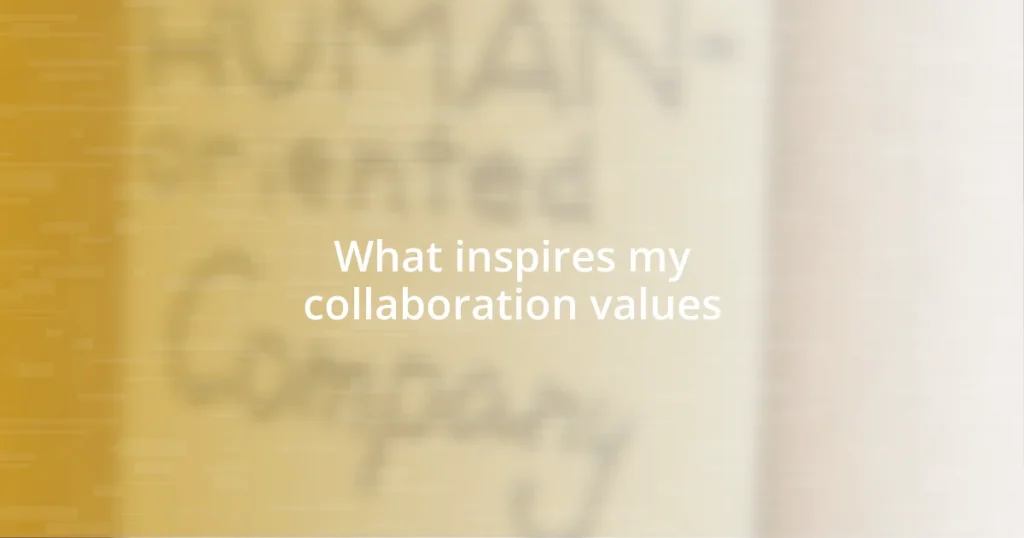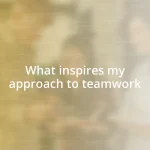Key takeaways:
- Constructive criticism and vulnerability can enhance team connections and foster innovation.
- Aligning shared values within a team is crucial for effective communication, trust, and emotional resilience.
- Diversity in teams promotes creativity and problem-solving, as different perspectives lead to richer solutions.
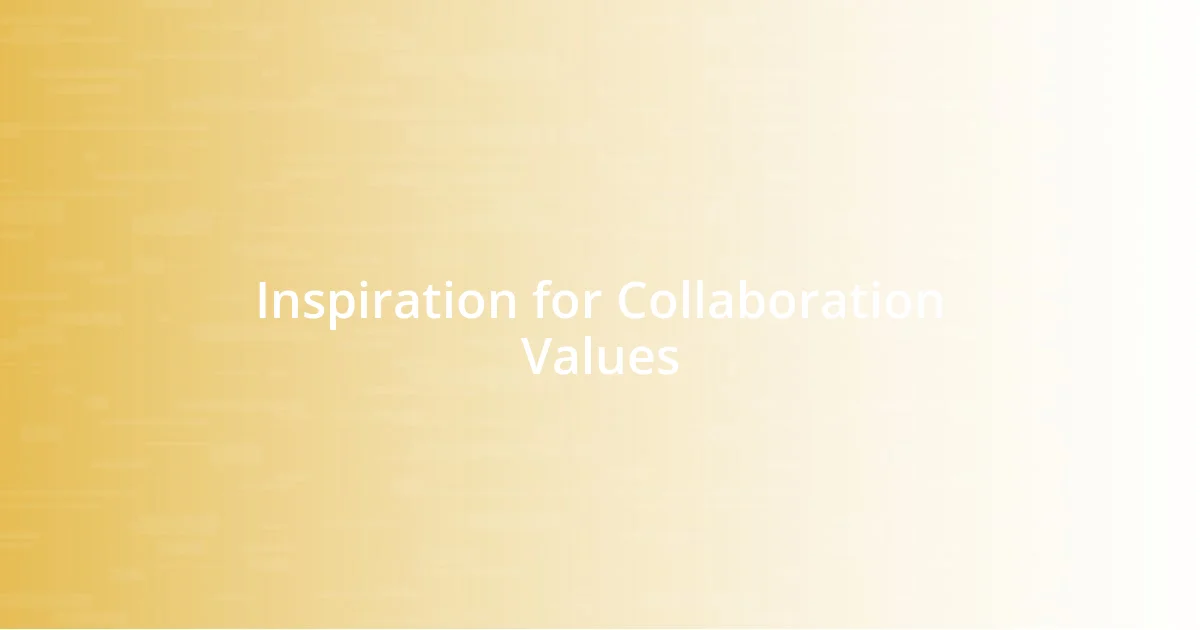
Inspiration for Collaboration Values
When I reflect on my own collaboration values, I often remember a project I worked on with a diverse team. We each brought unique perspectives, and that blending of ideas sparked what I can only describe as a creative renaissance. It makes me wonder—how often do we truly tap into the potential that different viewpoints offer?
One pivotal moment in my career was when a colleague challenged my approach during a brainstorming session. Initially, I felt defensive, but that moment opened my eyes to the beauty of constructive criticism. It really got me thinking: isn’t it fascinating how vulnerability can lead to stronger connections and more innovative solutions?
Another source of inspiration for my collaborative values comes from the countless experiences I’ve had witnessing the power of empathy in teamwork. I remember a time when a teammate was struggling with personal issues. Instead of pushing through, we created a more supportive environment that allowed us to tackle challenges together. That experience left me questioning—how can we cultivate a culture where everyone feels safe to be authentic?
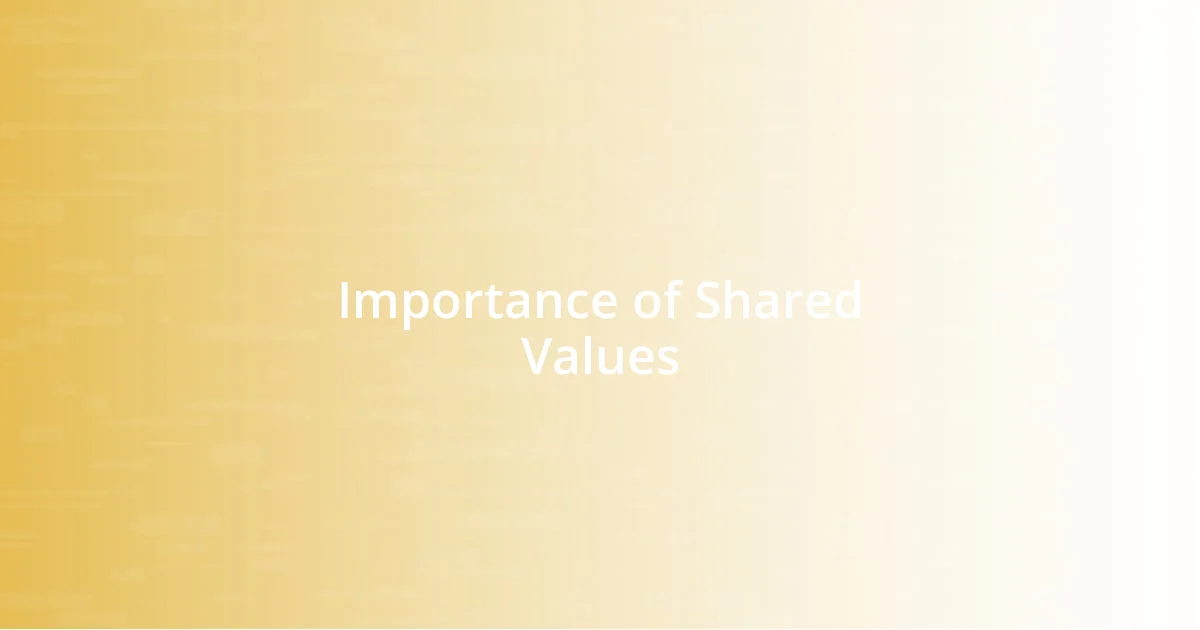
Importance of Shared Values
Shared values lay the foundation for effective collaboration. When I think back to my own experiences, I remember working on a team where mutual respect and trust were at the forefront. This made it easier for everyone to voice their ideas candidly, resulting in a more innovative and cohesive atmosphere. It’s remarkable how aligned values can transform a group’s dynamics.
On another occasion, I was part of a project where differing priorities surfaced due to misalignment in values. It was challenging, to say the least, as tensions grew. However, when we took the time to openly discuss our values and goals, we discovered common ground that reignited our passion for the project. This taught me that aligning values isn’t just a strategy—it’s a necessity for true collaboration.
It’s evident that shared values foster not only efficiency but also emotional resilience within teams. I recall a difficult deadline when team morale was low. We rallied around our common principles—integrity and support—boosting everyone’s spirit. Seeing my teammates uplift each other in times of stress reinforced my belief in the strength of shared values in collaborative settings.
| Impact of Shared Values | Consequences of Misaligned Values |
|---|---|
| Enhances communication and trust | Creates misunderstandings and conflict |
| Fosters creativity and innovation | Restricts idea-sharing and collaboration |
| Strengthens team morale | Leads to low engagement and morale |
| Encourages mutual support | Results in isolation and disenchantment |
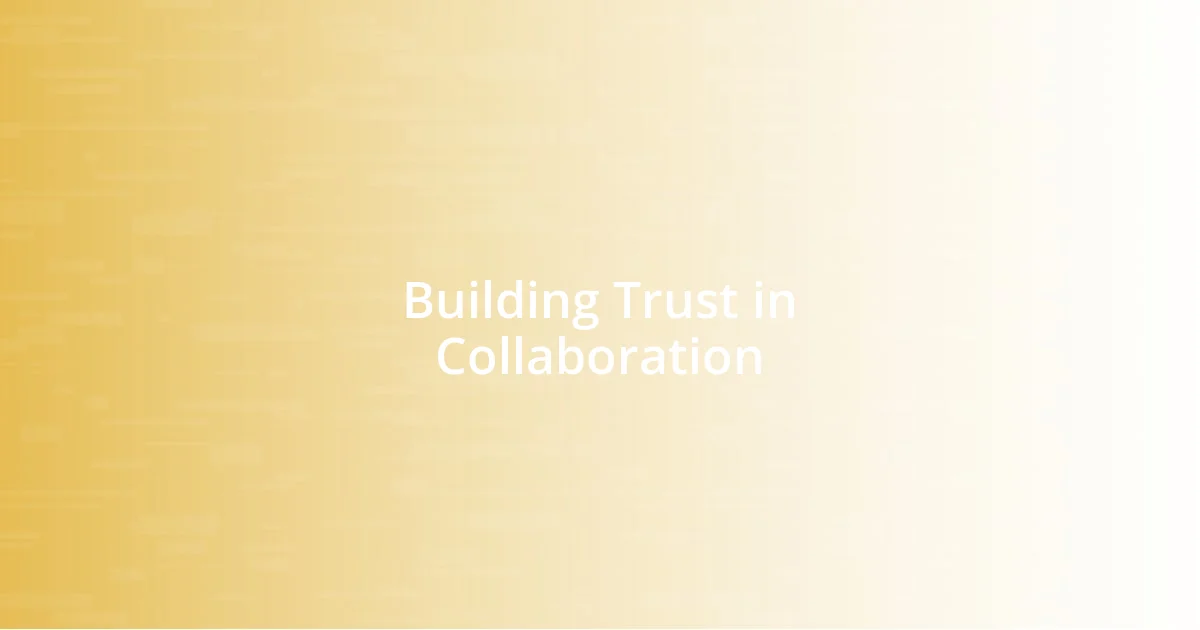
Building Trust in Collaboration
Building trust in collaboration isn’t just about policies or procedures; it’s about the genuine relationships we cultivate. I remember a project where a colleague had expressed concern about our tight timeline. Instead of dismissing it, I invited him for a coffee to discuss it openly. That simple act of creating space for honest dialogue not only alleviated his worries but also deepened our professional relationship. Trust can often start with the smallest gestures; it’s about being approachable and transparent.
- Establish open communication channels where everyone feels assured to voice their thoughts.
- Demonstrate reliability by meeting commitments and being consistent in your actions.
- Encourage vulnerability by sharing your challenges, which can inspire others to do the same.
- Recognize and celebrate team achievements, reinforcing a sense of shared purpose and validation.
- Foster a safe space for constructive feedback, making it clear that growth often comes from learning together.

Effective Communication Strategies
Effective communication is all about creating spaces where everyone feels comfortable sharing their thoughts. I remember a brainstorming session that could have easily turned chaotic. Instead, I implemented a simple round-robin approach, where each person took turns to share their ideas without interruption. Watching people who often held back finally contribute made me realize how much untapped potential lies within a diverse group. Isn’t it amazing how a structured format can bring out the best in us?
To further enhance communication, I learned the importance of asking open-ended questions. During a recent project, instead of sticking to yes-or-no prompts, I started asking, “What do you think about this approach?” This shift not only encouraged deeper conversations but also allowed team members to voice their opinions freely. The insights we gained were invaluable, and it felt like everyone was finally engaged in the process. Isn’t it fascinating how a slight change in questioning can transform the dialogue?
Additionally, clarity is crucial in ensuring everyone is on the same page. I recall a miscommunication that arose when roles weren’t clearly defined. Afterward, we adopted a practice of summarizing key points at the end of each meeting. This habit dramatically reduced confusion and streamlined our efforts. Have you ever experienced the relief that comes with clarity? I know I certainly did, and it reinforced my belief in the power of effective communication strategies.
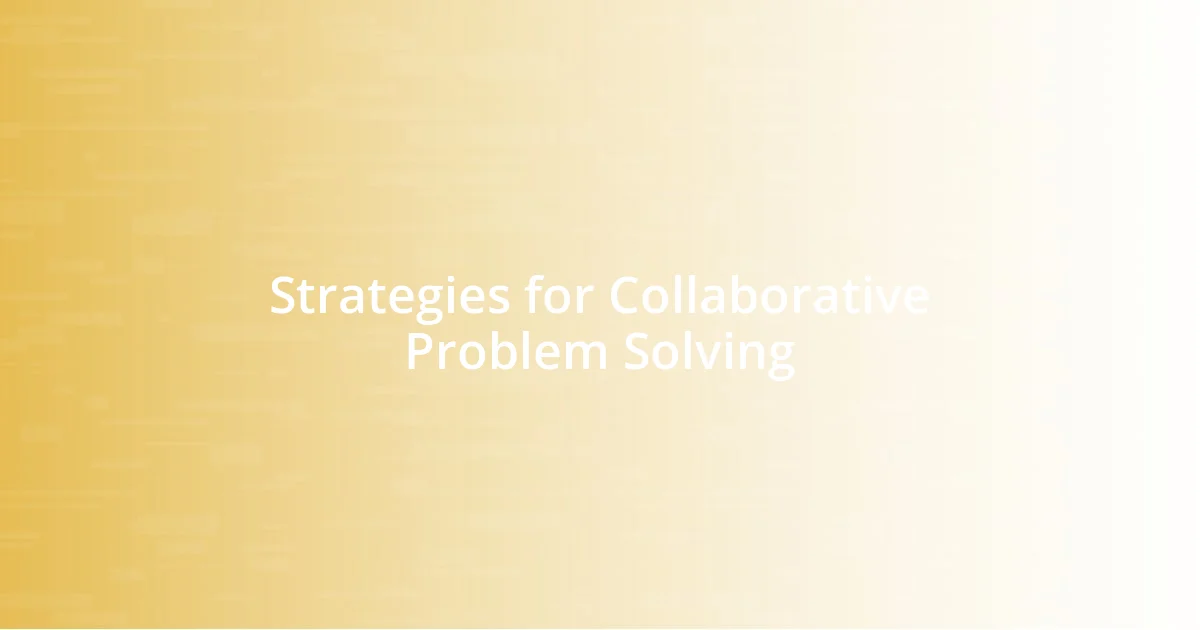
Strategies for Collaborative Problem Solving
When tackling collaborative problem-solving, I’ve found that brainstorming sessions are most effective when they include diverse perspectives. In one instance, our team was stuck on a project; everyone seemed to bring a different vision to the table. So, I decided to organize a whiteboard session where we all got to sketch out our ideas. It was inspiring to see everyone’s creativity flow, and by the end of it, we had a clear direction formed from a mix of our viewpoints. Have you ever seen a problem transform into multiple solutions just by inviting different thoughts? That’s the beauty of collaborative brainstorming.
Another strategy that has worked wonders is implementing collaborative decision-making tools. In my previous role, we used a digital platform to rate our options collectively. When we had a tough choice to make, instead of pursuing a single opinion, we all contributed our ratings and comments on each idea. The results were illuminating, and we found consensus much quicker than I anticipated. It made me realize how empowering it can be to give everyone a voice—everyone could see how their input mattered. Isn’t it fulfilling to know that decisions aren’t dictated but rather built by the whole team?
Lastly, I believe in the power of reflection to solidify teamwork. After concluding a project, I initiated ‘lessons learned’ sessions, where we examined what went well and where we stumbled. This practice not only fostered a culture of learning but also demonstrated our commitment to continuous improvement. I remember how one team member shared their initial frustrations, which opened the floor to others who had similar experiences. This honesty bonded us further and set the stage for even greater collaboration in our next endeavor. Have you ever reflected on a team’s journey together? Those moments can truly transform relationships and outcomes.
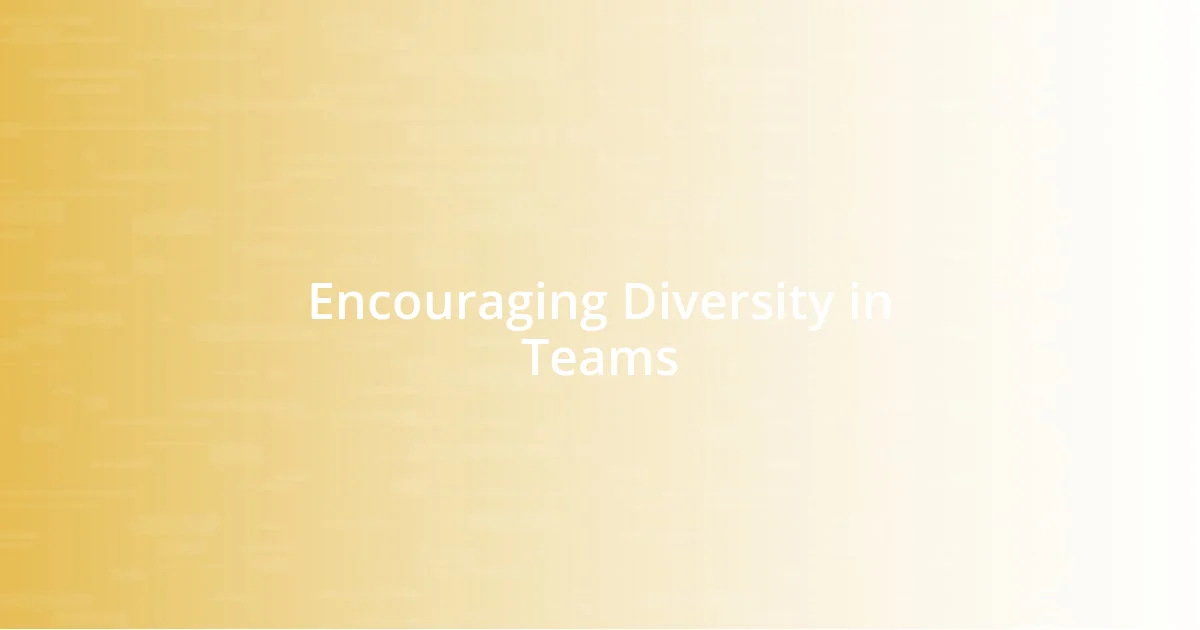
Encouraging Diversity in Teams
Encouraging diversity in teams starts with creating an atmosphere where everyone feels valued. I remember a pivotal moment when I joined a new team filled with individuals from various backgrounds—each with their own unique stories and experiences. Initially, it felt intimidating, yet I discovered that having such a rich tapestry of perspectives opened up incredible avenues for creativity. Isn’t it fascinating how diversity not only broadens our horizons but also enhances problem-solving?
In my experience, fostering an inclusive culture means actively seeking out different opinions and making sure everyone has a voice. During one project, I made it a point to check in with quieter teammates, asking for their thoughts on strategies we were considering. What surprised me was the wealth of insights that emerged from those who typically didn’t share. It made me realize how essential it is to actively encourage participation; have you ever unearthed a brilliant idea simply by inviting input from every corner of your team?
Moreover, the power of diverse teams lies in their ability to bring fresh solutions to entrenched challenges. I fondly recall a brainstorming session where we tackled a persistent issue that had perplexed us for weeks. By ensuring we included members from different departments, we stumbled upon concepts that no one had even considered before. I could feel the energy in the room shift—each contribution felt like a puzzle piece coming together. How rewarding is it to witness a diverse team not just thinking outside the box but creating an entirely new box?
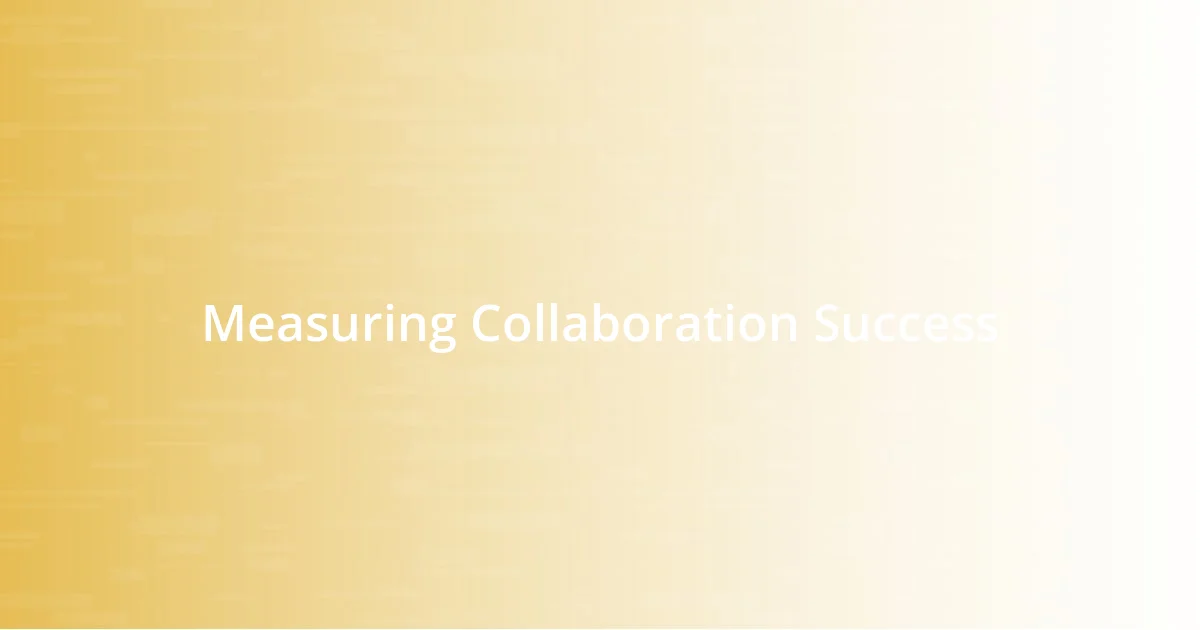
Measuring Collaboration Success
When I think about measuring collaboration success, it’s critical to establish clear metrics right from the beginning. In one project, we set specific goals like improved communication scores and a timeline for project milestones. Watching how our team grew in transparency and accountability was quite gratifying. Have you ever noticed how quantifying our progress can breathe life into the collaboration process?
Another effective approach I’ve employed is gathering feedback post-project. After we wrapped up a significant endeavor, I sent out a survey asking team members what they felt worked well and what didn’t. The candid responses were illuminating, showcasing areas where we excelled and revealing opportunities for growth. It’s fascinating how reflective practices can reshape our interactions—have you found that sometimes the feedback you receive leads to breakthroughs in future collaborations?
Lastly, observing team dynamics in real time can be revealing. During a recent project, I took to jotting down notes on how we engaged with each other during meetings. This allowed me to identify themes in our interactions and bring those insights back to the group. I was surprised at how focusing on our collaborative behaviors opened up a dialogue that further strengthened our teamwork. Isn’t it amazing how simply paying attention to these nuances can enhance our collective performance?










